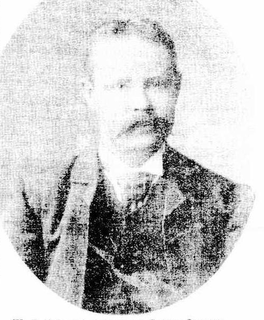 W
WThe 1892 Broken Hill miners' strike was a sixteen-week strike which was one of four major strikes that took place between 1889 and 1920 in Broken Hill, NSW, Australia.
 W
WThe 1926 general strike in the United Kingdom was a general strike that lasted nine days, from 4 to 12 May 1926. It was called by the General Council of the Trades Union Congress (TUC) in an unsuccessful attempt to force the British government to act to prevent wage reductions and worsening conditions for 1.2 million locked-out coal miners. Some 1.7 million workers went out, especially in transport and heavy industry. The government was prepared, and enlisted middle class volunteers to maintain essential services. There was little violence and the TUC gave up in defeat.
 W
WThe 1942 Betteshanger Miners' Strike took place in January 1942 at the Betteshanger colliery in Kent, England. The strike had its origins in a switch to a new coalface, No. 2. This face was much narrower and harder to work than the previous face and outputs were reduced. The miners proved unable to meet management production quotas and the mine owners refused to pay the previously agreed minimum daily wage, alleging deliberate slow working. An arbitrator called in to review the dispute ruled that the quotas were achievable. The miners disagreed and went on strike from 9 January.
 W
WThe 1964 Mount Isa Mines dispute was an Australian eight-month industrial dispute between miners and management at Mount Isa Mines (MIM) in Mount Isa, Queensland.
 W
WThe 1981 strike at the Piast Coal Mine in Bieruń was the longest underground protest in the postwar history of Polish mining, and the longest strike of the martial law in Poland. It began on December 14, 1981, one day after introduction of the martial law, and ended on December 28, when approximately 1,000 protesting miners emerged from the mine. They spent two weeks underground, including Christmas, and ended the protest after the government guaranteed their safety.
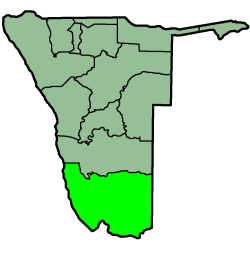 W
WThe 2008 Skorpion Zinc strike was a worker's strike against the ownership of the Skorpion Zinc mine near the southern Namibian town of Rosh Pinah in ǁKaras Region. Skorpion Zinc is the largest zinc mine in Africa and the eighth largest in the world. Lasting 19 days, the workers ended their strike when management agreed to a 12 percent raise in wages plus overtime and travel expenses. The workers had originally demanded a 14 percent raise in wages. The strike was supported by the Namibia's Mineworkers Union of Namibia, who accused Skorpion Zinc of practising racial discrimination and of negotiating in bad faith.
 W
WThe Asturian miners' strike of 1934 was a major strike action undertaken by regional miners against the 1933 Spanish general election, which redistributed political power from the leftists to conservatives in the Second Spanish Republic. The strike lasted two weeks from 4 October to 19 October 1934 in Asturias. The election led to the conservative Spanish Confederation of the Autonomous Right (CEDA), securing a parliamentary majority in the Spanish government on 6 October. The strike and subsequent demonstrations eventually developed into a violent revolutionary uprising in an attempt to overthrow the conservative regime. The revolutionaries took over the province of Asturias by force, killing a large portion of the region's inhabitants including police, religious leaders, and uncooperative civilians. Their initial entry into Asturias – armed with dynamite, rifles, and machine guns – culminated in the destruction of numerous religious institutions, such as churches and convents. The rebels officially declared a proletarian revolution and instituted their own local government in occupied territory. The rebellion was crushed by the Spanish Navy and the Spanish Republican Army, the latter using mainly colonial troops from Spanish Morocco.
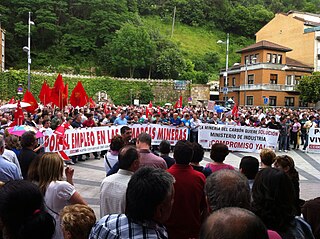 W
WThe 2012 Asturian miners' strike was an industrial dispute involving more than 8,000 coal miners in the Spanish autonomous community of Asturias. The geographer David Featherstone has described the strike as "one of the most dramatic forms of anti-austerity protest to emerge in the wake of the [financial crisis of 2007–08]." There was a similar strike, in both size and scope, in 1934.
 W
WThe Cananea strike, also known as the Cananea riot, or the Cananea massacre, took place in the Mexican mining town of Cananea, Sonora, in June 1906. Although the workers were forced to return to their positions with no demand being met, the action was a key event in the general unrest that emerged during the final years of the regime of President Porfirio Díaz and that prefigured the Mexican Revolution of 1910. In the incident twenty-three people died, on both sides, twenty-two were injured, and more than fifty were arrested.
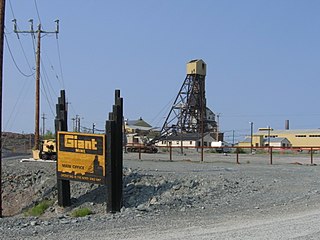 W
WThe Giant Mine was a gold mine located on the Ingraham Trail, 5 km (3.1 mi) north of Yellowknife, Northwest Territories. Giant Mine is within the Kam Group, which is part of the Yellowknife greenstone belt. Gold was discovered on the property and mineral claims staked in 1935 by Johnny Baker, but the true extent of the gold deposits was not known until 1944, when a massive gold-bearing shear zone was uncovered beneath the drift-filled Baker Creek Valley.
 W
WPeople have worked as coal miners for centuries, but they became increasingly important during the Industrial revolution when coal was burnt on a large scale to fuel stationary and locomotive engines and heat buildings. Owing to coal's strategic role as a primary fuel, coal miners have figured strongly in labour and political movements since that time. After the late 19th century coal miners in many countries were a frequent presence in industrial disputes with both the management and government. Coal miners' politics, while complex, have occasionally been radical, with a frequent leaning towards far-left political views. A number of far-left political movements have had the support of both coal miners themselves and their trade unions, particularly in Great Britain. In France, on the other hand, coal miners have been much more conservative.
 W
WThe Jiu Valley miners' strike of 1977 was the largest protest movement against the Communist regime in Romania before its final days, ushering in a period of intermittent labour unrest that would last a dozen years, and the most important challenge posed by a group of workers to the regime since the protests triggered by the Hungarian Revolution of 1956. It took place 1–3 August 1977 and was centred in the mining town of Lupeni, in Transylvania's Jiu Valley.
 W
WThe Lena Massacre or Lena Execution refers to the shooting of goldfield workers on strike in northeast Siberia near the Lena River on 17 April [O.S. 4 April] 1912.
 W
WThe Lupeni strike of 1929 took place on 5 and 6 August 1929 in the mining town of Lupeni, in the Jiu Valley of Transylvania, Romania.
 W
WThe Marikana massacre, was the killing of 34 miners by the South African Police Service (SAPS). It took place on 16 August 2012, and was the most lethal use of force by South African security forces against civilians since 1976. The massacre has been compared to the 1960 Sharpeville massacre. The incident took place on the 25th anniversary of a nationwide miners' strike.
 W
WThe national coal strike of 1912 was the first national strike by coal miners in the United Kingdom. Its main goal was securing a minimum wage. After 37 days, the government intervened and ended the strike by passing the Coal Mines Act, establishing a minimum wage for the first time.
 W
WThe Pacification of Wujek was a strike-breaking action by the Polish police and army at the Wujek Coal Mine in Katowice, Poland, culminating in the massacre of nine striking miners on December 16, 1981.
 W
WR v Commonwealth Court of Conciliation and Arbitration; Ex parte BHP, was an early decision of the High Court of Australia concerning the jurisdiction of the Commonwealth Court of Conciliation and Arbitration in which the High Court controversially, granted prohibition against the Arbitration Court to prevent it from enforcing aspects of an industrial award. The High Court held that the Arbitration Court had gone beyond settling the dispute that had been submitted to it and in doing so had made a jurisdictional error.
 W
WThe Rand Rebellion was an armed uprising of white miners in the Witwatersrand region of South Africa, in March 1922. Jimmy Green, a prominent politician in the Labour Party, was one of the leaders of the strike.
 W
WOn 16 December 1929, New South Wales Police drew their revolvers and shot into a crowd of locked-out miners in the New South Wales town of Rothbury in Australia, killing a 29-year-old miner, Norman Brown, and injuring approximately forty-five miners. The incident became known as the Rothbury affair or the Rothbury riot, and is described as the "bloodiest event in national industrial history."
 W
WThe Battle of Saltley Gate was the mass picketing of a fuel storage depot in Birmingham, England, in February 1972 during a national miners' strike. When the strike began on 9 January 1972, it was generally considered that the miners "could not possibly win." Woodrow Wyatt, writing in the Daily Mirror, said: "Rarely have strikers advanced to the barricades with less enthusiasm or hope of success... The miners have more stacked against them than the Light Brigade in their famous charge." The picketing of the fuel depot – out of which tens of thousands of tons of coke were being distributed nationwide – became a pivotal, and symbolic, event during the strike. Forcing its closure secured victory for the National Union of Mineworkers (NUM).
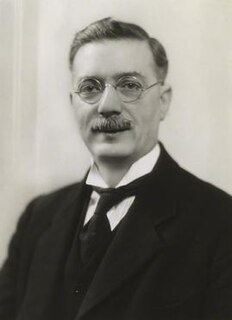 W
WGeorge Alfred Spencer was an English miner, trade union leader and Member of Parliament from 1918 to 1929 for Broxtowe.
 W
WThe Miners Strike of 1910-11 was an attempt by miners and their families to improve wages and living conditions in severely deprived parts of South Wales, where wages had been kept deliberately low for many years by a cartel of mine owners.
 W
WThe Welsh coal strike of 1898 was an industrial dispute involving the colliers of South Wales and Monmouthshire. The strike began as an attempt by the colliers to remove the sliding scale, which determined their wage based on the price of coal. The strike quickly turned into a disastrous lockout which would last for six months and result in a failure for the colliers as the sliding scale stayed in place. The strike is seen as an important landmark in Welsh history as it saw the true adoption of trade unionism in the southern coalfield which had been slow to take hold before then. The South Wales Miners' Federation was the largest trade union to have originated from this dispute.
 W
WDavis Day, also known as Miners' Memorial Day is an annual day of remembrance observed on June 11 in coal mining communities in Nova Scotia, Canada to recognize all miners killed in the province's coal mines.